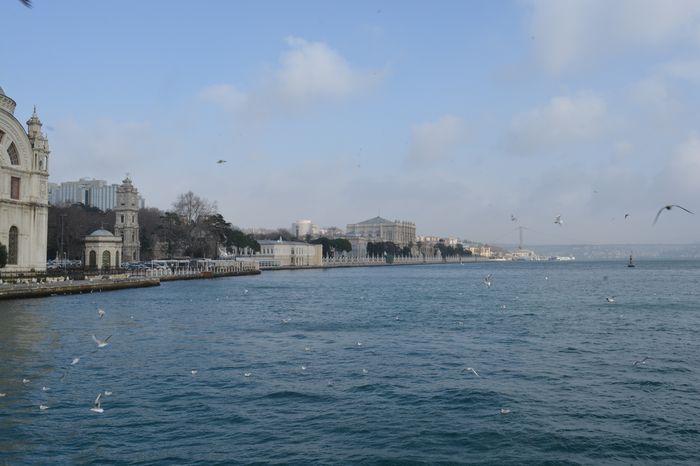In 1888, consequent upon the discovery of twenty-one sarcophagi, some of which may be justly regarded as masterpieces of Hellenic sculpture, at Saida (the Sidon of the Ancients), Chinill Kiosk, in its turn, was found too small for the requirements of a museum, and an imperial decree was issued sanctioning the erections of special premises for the Saida sarcophagi opposite Chinill Kiosk. The new building was completed and inaugurated in 1892.
The most prominent by far of all the antiquities in the Constantinople Museum are those contained in the matchless collection of ancient monuments unearthed in Phoenicia. The greater part of these monuments, and the most important, were discovered in the vicinity of Saida, the Sidon of the Ancients, during two archaeological expeditions under Hamdl Bey, director of the Imperial Museum at Constantinople. His party succeeded in excavating and exploring two contiguous tumuli. One of these contained the anthropoid Egyptian sareophagus of Tabnith, King of Sidon. The other, consisting of seven chambers, contained seventeen sarcophagi, among which were those called ‘ the Weepers or ‘ Mourners ; the black stone one in Egyptian style; that said to be Alexanders, with three others in the same style; that called the ‘ Lycian ; the ‘ Satrap’s ’; two anthropoid sarcophagi, and a few plain ones private tour istanbul.
The best and easiest way of seeing the Museum is to begin from the room on the left of the entrance and which is :—
ROOM NO. 2
The Lycian Sarcophagus, No. 75.—This was discovered at Saida in 1887 by Hamdl Bey, and is of Paros marble. The head was broken in excavation ; but such of the fragments as have been recovered have been pieced together, and the monument has thus been partially restored. The colouring has almost entirely disappeared. The shape of this sarcophagus is one which is peculiar to Lycia, where numerous other monuments of its kind are to be found. It is evident that this stone coffin was acquired at second hand by some Sidonian magnate, and was used for him after his demise. The carvings at the head and foot represent en-counters between centaurs.
The figures at the foot represent two centaurs quarrelling about a hind; while those at the head illustrate an episode in a wrestling-match between centaurs and lapiths, the death of the hero Cseneus, who is represented lying under a heap of amphorae and fragments of rock. The figures on one of the sides are those of Amazons in four-horse chariots hunting lions; and those on the opposite one represent a party of mounted men at a wild boar hunt. The symmetrical arrangement of the figures on both sides of this sarcophagus is well worthy of notice.
This sarcophagus is contemporary with some of the finest Athenian sculptures, and belongs to the close of the fifth, or to the commencement of the fourth century B.C., the period when Lycia, becoming tributary to the Athenians, was influenced by Athenian art.
The Sarcophagus alleged to be Alexander’s.— This sarcophagus was discovered at Saida in 1887 by Hamdl Bey, and is of Pentelic marble; it is 10 feet 8 inches long, 5 feet 7 inches broad, and 8 feet 2 inches in depth. One of its corners was broken off in excavation, but some of the fragments have been recovered and put together, and the monument is now partially restored; a head, however, and some other fragments of the carved figures are still missing. The repairs to the horse’s hoof and to the arm of one of the hunters are ancient.
